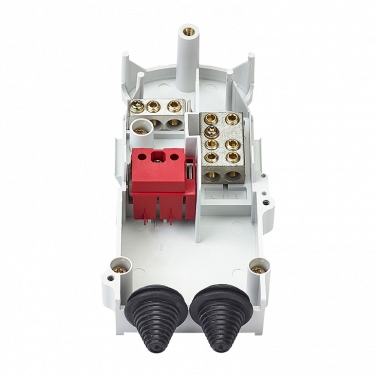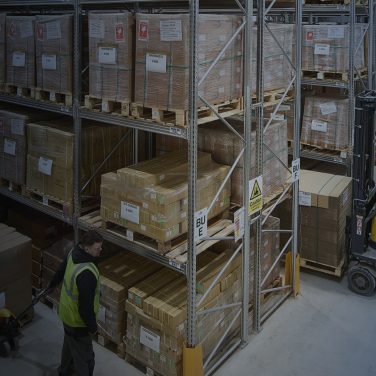For over 10 years Lucy Zodion has been helping to guide cities on a smarter lighting journey with its Vizion® system. Taking lighting control to the next level, for improved street lighting efficiencies and management, the Vizion® solution creates an eco-system of collectors and nodes which communicate with an online central management system (CMS) that helps city leaders monitor and manage the behaviour of an entire network of street lights, from one place.
In a nutshell, Vizion® makes street lighting control more manageable and flexible, with cost saving a key benefit. However, over the years the system has evolved to help improve street lighting control with software upgrades and enhanced hardware capabilities that make urban lighting infrastructure more intuitive. These features and enhancements include:
Traffic Monitoring (HARLiCS / MoRLiCS)
Throughout the UK, roads and streets employ streetlights to improve visibility on routes and make journeys safer for all users. In residential areas, lighting columns illuminate streets to ensure both pedestrians and road users are safe, with lighting levels managed to ensure adequate illumination is provided, while considering efficiencies. These are usually managed via CMS with programmed lighting sequences that respond to daytime light levels and seasonal change.
Within highway networks, lighting has a more important role. It not only guides journeys throughout the country, but ensures motorists drive safely thanks to adequate illumination at times of darkness, heavy use and road traffic accidents. This means that more consideration must be made as to how lighting is provided; it must be more intuitive to real-time scenarios, while ensuring efficiencies are improved.
As road lighting accounts for approximately 70%* of the total energy consumption on highways, many solutions have been developed to combat this, such as LEDs and photocells. Using this hardware alongside a CMS, like Vizion®, provides highways organisations with a means to control lighting and reduce energy consumption further, whilst maintaining adequate light output to guide motorists.
Lucy Zodion’s Vizion® was one of the first systems to be capable of providing more proactive illumination and dimming profiles, based on traffic flow data collected by Highways England (formerly the Highways Agency). Working with specialists from the UK highway industry, our team has developed a range of lighting solutions that ensure compatibility with both HARLiCS (Highways Agency Lighting Control System) and MoRLiCS (Motorway Road Lighting Control System).
Our collectors and nodes work together to gather real-time time traffic data via sensors, which are installed atop road lights and feedback to a CMS (integrated with HARLiCS or MoRLiCS). This information is then used and compared against historical data to assess whether it is safe to dim lights or switch them off completely, rather than relying on a pre-programmed sequence. These systems can reduce energy by up to 30% by dimming motorway lights when traffic is light.
(* Source:http://www.highways.gov.uk/knowledge/projects/ha-road-lighting-control-system-harlics/)
Historical photocell switching profiles
In order to monitor effectiveness, many organisations use the data gathered by Vizion® hardware and stored on the Vizion® CMS to analyse a number of variables that could be crucial to city planning and cost-saving. One of these variables is the storage of historical photocell switching data.
Vizion® has the capability of recording and storing historical photocell switching times of streetlights that are part of the CMS network. Over time, as networks grow and requirements change, it is inevitable that the switching requirements of a single photocell will also change to accommodate. Being able to access historical data about the specific switching profiles of single photocells, enables city leaders to understand all changes that have been made throughout the entire life of the photocell in the system.
The advantages of this feature are that Local Authorities can gain understanding about the effects of photocell switching within a city, by comparing switching profiles with regional data. Using records of photocell switching, City Leaders can ensure their street lighting infrastructure is performing as and when expected, while keeping the needs of the community front of mind.
Multi-platform control
The Vizion® eco-system is compatible with a number of base connectors and communication systems to optimise flexibility and use throughout a number of street lighting networks. Whether lighting columns are equipped with the latest lighting technology, or continue to use traditional luminaires and components, Vizion® hardware is available in a number of specifications to suit a wide variety of models.
Vizion® nodes have the capability of controlling 1-10V, 0-10V and WiMAC enabled drivers and follow the specification of those defined in the TALQ Consortium, to ensure interoperability across CMS and street lighting networks. As a smart street lighting solution, Vizion® nodes are capable of controlling 1-10V, 0-10V and WiMAC respectively, without requiring further programming; simply link the hardware to the network and it will behave accordingly.
Additionally, Vizion® nodes are able to fit on three-pin and seven-pin NEMA sockets, as well as via a 20mm mounting hole, depending on the existing or new street lighting hardware. This ensures that lighting schemes, using components and infrastructure designed by multiple manufacturers, can be incorporated within the Vizion® eco-system for enhanced control and monitoring.
Having abundant choice, thanks to the flexibility and compatibility of Vizion®, gives users the opportunity to consider both retrofitting nodes to older lighting networks, while luminaire upgrades can be installed with nodes, all of which can be controlled by the same Vizion® CMS – extending the use of older columns while embracing newer lighting technologies.
Photocell control
As technology becomes more advanced and software more commonplace, hardware solutions must also follow suit in order to align with the growing requirements of users. Over the past ten years the Vizion® system has harnessed the progression in technology to ensure users have the ability to do more with their street lighting networks.
An example of this is in the latest Vizion® nodes, which now have photocells incorporated into their physical footprint. This gives them the ability to switch high wattage luminaires using nodes that can control multiple drivers within each luminaire, allowing users to optimise efficiencies even more.
This also helps at the commissioning stage, as it avoids any unnecessary energy consumption or day burning when finalising installation and during the commissioning process.
Configurable Fault Reports
The entire Vizion® system has been designed and developed to give city leaders and lighting engineers more insight into the way street lighting networks behave, both as a whole and per lighting column. This helps them to better control lighting in a way that works for their region and the needs of the community, in line with budgets and Governmental requirements.
Vizion® CMS collects masses of data about street lights within the network and stores this via a cloud based system, accessible only by those with authorised logins. As many Local Authorities are different and have different requirements for their lighting schemes, the data they require will also differ. Considering this, a lot of the data available on the Vision® CMS is configurable – namely fault reports.
Configurable Fault Reports allow Vizion® users to choose information that is most relevant to them and their requirements. Where faults are concerned, the user can decide which type of event is important to them and how long they have been happening, before they become a fault.
An example of this is identifying a street lighting column within a scheme that is not illuminating when it should be. Without CMS a light can be out for days, without the local council or lighting engineers knowing, this increases the incident of public accidents and reduces cost saving as power could still be fed to the column, even though a lamp is damaged, with maintenance and fault finding taking longer due to the manual nature of the task.
The Vizion® system gives a tailored yet accurate approach to street lighting management, helping city leaders to identify the actionable insights that will have the biggest impact on their borough.
Multi-group Tagging
Using Vizion® it is possible to group a number of streetlights within a specific network and ask them to behave in a different way than others in the scheme. This is perfect for areas that transition from urban to rural or high traffic to hardly used, however, another capability of the system helps users to further tailor their lighting system; via multi-group tagging.
This function gives users the flexibility to apply changes to overlapping groups, too. A useful and under-used feature that helps city leaders programme their street lighting to fulfil the requirements of specific events that happen rarely but on set dates, or regularly but at specific times, helping urban lighting become more intuitive.
Furthermore, once multiple groups have been tagged, different variables can be monitored and measured – meaning that a single streetlight can be programmed in a number of ways to gather masses of information, to meet the requirements of that particular group. From meter settings to lamp settings, many properties for a whole group can be changed in one go, rather than having to individually programme a single column.
Predictions for the future
Today Vizion® helps city leaders make their lighting infrastructure smarter and more sustainable, acting as a stepping stone into smart city development. But if connected lighting can be controlled by the click of a mouse or the touch of a screen, what other urban assets can city leaders manage?
Lighting is the fundamental job of a lamppost; the opportunities they hold offer so much more in the way cities respond to the needs of their community. As urban environments become better connected than ever before, with digitalisation touching every part of our daily lives, the solutions Lucy Zodion develops will inevitably evolve in accordance.
The connected lamppost has been realised as an integral factor for smarter more responsive cities and, with the integration of IoT, can be a pivotal feature throughout future urban areas. Smart illumination is only the beginning of the how street lighting can energise future communities, with solutions already in development to transform it from simple city infrastructure to a valuable digital asset. Its Lucy Zodion’s commitment to develop tomorrow’s solutions, today – starting with the ‘humble lamppost’.
To find out more about Vizion® and how it can aid you on your journey to better streetlighting control, head to our product page, here.


